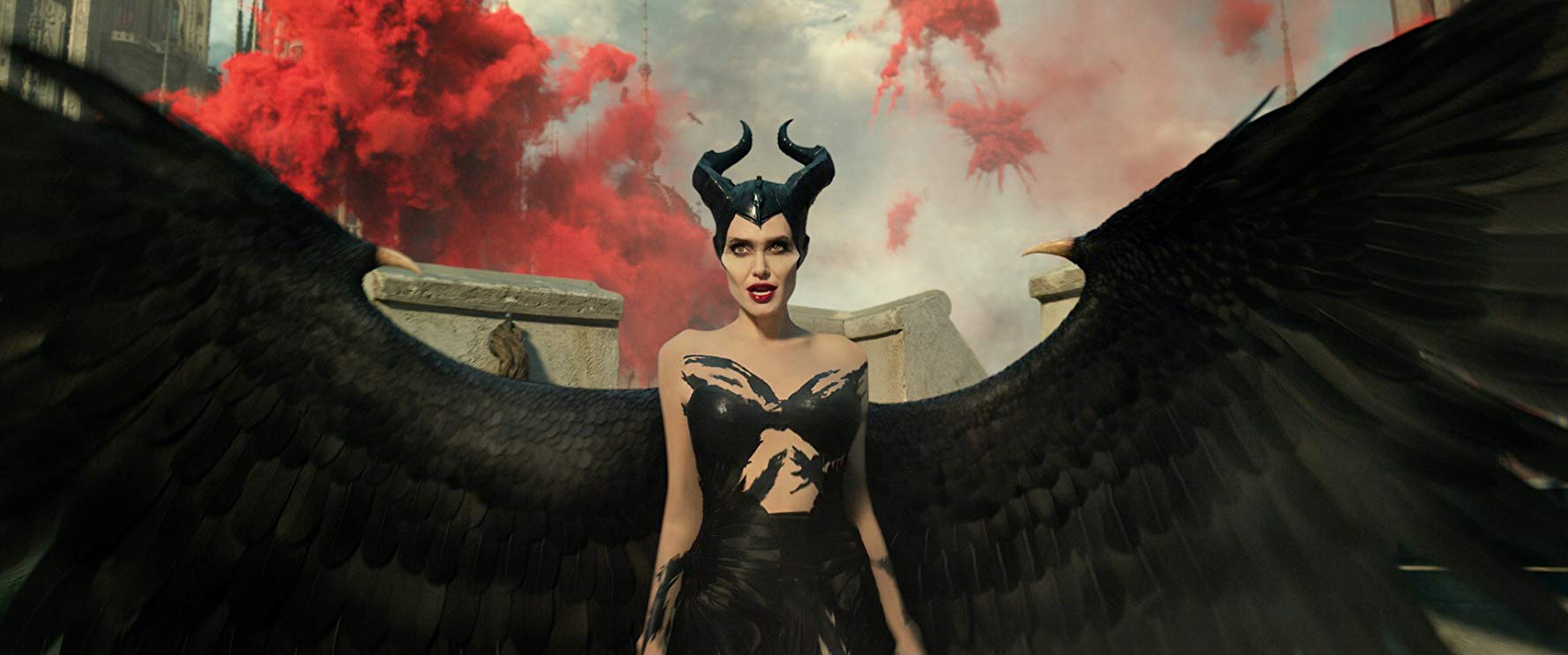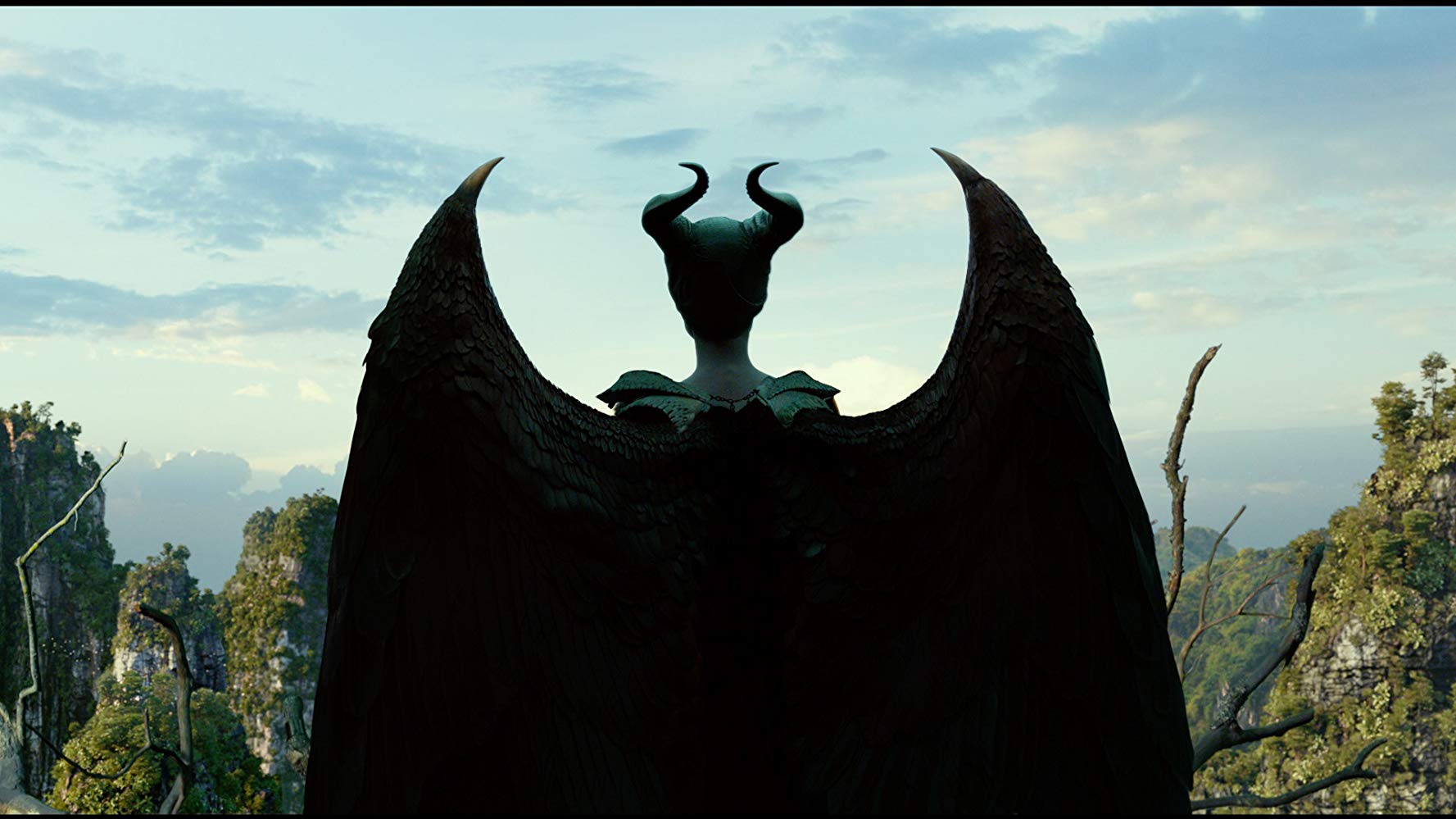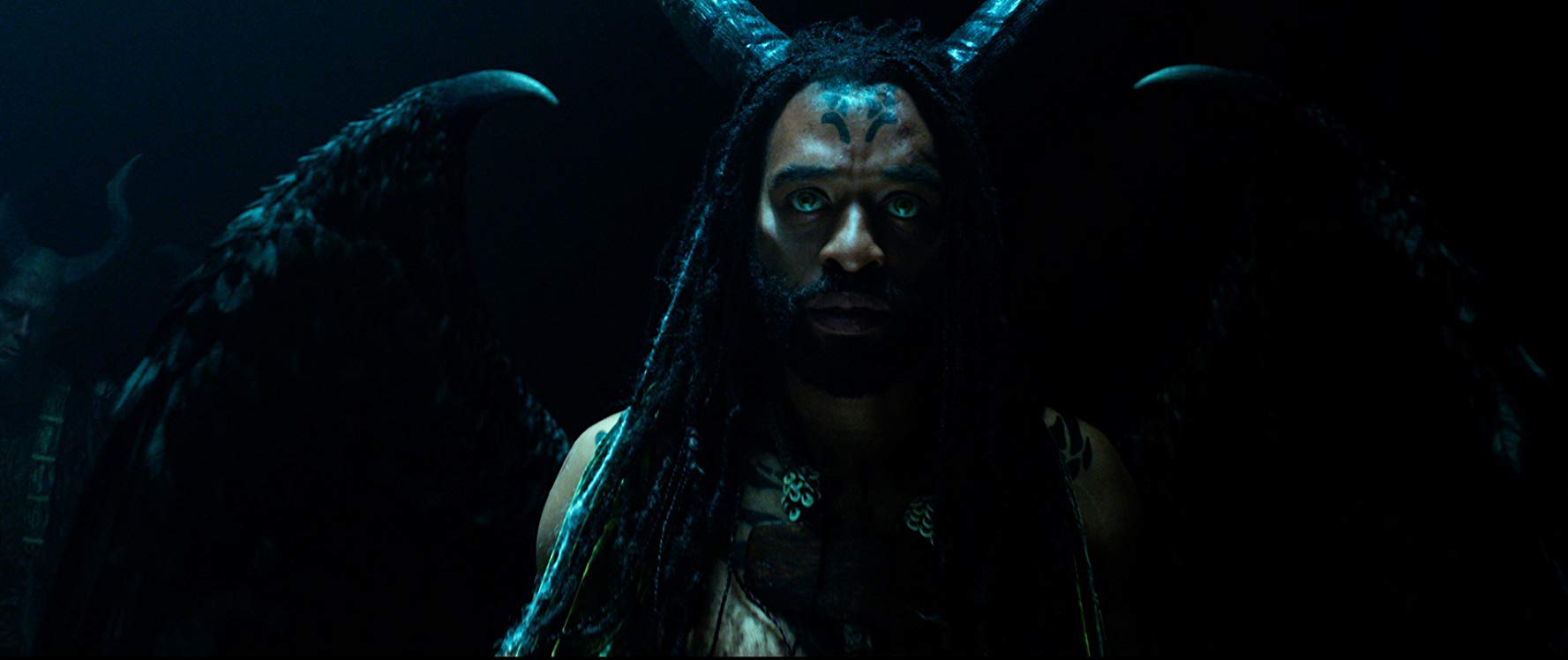What comes as a surprise is that despite the film’s title, Maleficent 2 isn’t really about Maleficent. Jolie and her magnificently enhanced cheekbones take a backseat to an interesting premise about a battle between two kingdoms and the unyielding power of love. Maleficent’s Goddaughter Aurora, who’s now the Queen of Moor accepts a marriage proposal from her lover, Prince Phillip of Alstead. Maleficent isn’t happy with the engagement, nor is Phillips’ mother, Queen Ingrith (Michelle Pfeiffer). The writing duo of Micah Fitzerman-Blue and Noah Harpster take what at first seems like a petty family feud anchored by two egotistical future in-laws and doubles it as an allegory for prejudice and bigotry. It mostly works with some unexpectedly nuanced penmanship. Queen Ingrith is a racist. She has a deep-seated disdain for all non-human folk and she wants her family and kingdom to share her ideas — that magical creatures are foul and violent beasts — and take her for a saviour of sorts. Pfeiffer plays the character over the top in the best ways possible. Sometimes she’s ice, talking coldly through gritted teeth, sometimes she’s melodramatic, playing the victim. Maleficent can be violent, yes, but here, her rage is justified. Take the fantastically staged dinner sequence for instance. Ingrith repeatedly pushes Maleficent’s buttons. She spews hate, incites anger and slyly says that Aurora belongs in Alstead among her “true” people. But she does so with enough subtlety that when Maleficent shows any signs of retaliation, she comes off as the violent person, which Ingrith uses as “evidence” to reinforce her narrative. The film is at its best when its adult and focused on the relationship between Aurora, Maleficent and Queen Ingrith (forget Prince Phillips. He’s just cannon fodder). I love the heart-sinking moment where Aurora asks her godmother to cover her horns with a veil before meeting the future in-laws. Maleficent agrees, but there’s sadness in her eyes which she convincingly hides from her daughter. My heart sank a little. What does that say about Aurora? Despite being taken care of by Maleficent since she was barely a child, is there a part of her that’s ashamed of her Godmother? Or is she simply trying to fit in and steer her mother away from the established stereotype? Either way, it’s a painfully dispiriting moment that reminded me of what Amandla Stenberg’s character says in The Hate U Give about purposely not using slang and being confrontational in her white neighbourhood school to prevent herself from being labelled ghetto.
But soon, Maleficent recides slightly into the background, though her presence is always felt. We’re introduced to the majestic winged creatures known as Feys. They’re people of Maleficent’s race, once free to roam the earth, now oppressed and forced to live underground (i.e. the ghettos) by humans. Some, like Borra (Ed Skrien) want to go to war against the humans, others like Conall (Chiwetel Ejiofor) believe that the best way to end the conflict is through methods of peace. The two characters loosely resemble Martin Luther King Jr and Malcolm X. (At the same time, Queen Ingrith is creating a biological weapon which could lead to mass genocide.) Maleficent herself is conflicted. And this conflict is illustrated wonderfully through something as simple as her smile, one of the running threads in the film. For the most part, we see Maleficent scowling or glowering — Jolie brings a mixture of unfiltered sexiness and stoicism. Her trusty sidekick Diaval (Sam Riley) tells her that she needs to smile and be polite when she meets Prince Phillips’ parents. She struggles. Despair, uncertainty and warranted rage simmer deep within her bones. But when she sees a toddler Fey learn to fly, she lets out a wholly genuine smile, her eyes wet with tears. Here, Jolie allows her vulnerability to reach into your soul. Should she fight with all her physical might so that the little Feys can have a better life or should she stray away from the path of violence completely as that could put the lives of the little Feys in danger. War or peace?
But it’s not just some of the writing that makes the film work. It’s also director Joachim Ronning, who has stepped in and taken over the captain’s chair from the underwhelming Robert Stomberg. At the time of making Maleficent (2014), Stomberg was an inexperienced debutant helmer. Ronning who helmed Kon-Tiki and Pirates of the Carribean 5 has much surer hands. For the most part, he seems to have a good grasp of the fantasy genre. The cold open of the film is beautifully shot and is shrouded in darkness and mystery that creates a sense of urgency. We get the feeling that something evil is at work but we don’t know what. The reintroduction of characters like Aurora could’ve been done in a bland way, but Ronning slowly draws us in with sweeping shots that first show us old lady fairies who bicker like Taichi aunties, then water creatures with jiggly slabs of fat, pixies and various other creatures. But I also wonder if Ronning wrestled with himself (and maybe higher-ups at Disney) when it came to the vision of the film. There are moments where the film is dark and ominous yet gorgeous. These moments are spellbinding. Together with cinematographer Henry Braham, Ronning paints some genuinely stunning images that belong on the walls of the Louvre Museum — like the one where two Freys are underwater and another which sees the angelic Maleficent awaken in an underground cave that’s bone-white and foggy. There’s also the sweeping shot that journeys us through the Feys’ home that’s a feast for the eyes. I wish the entire film was photographed like this, because as a whole, Maleficent: Mistress of Evil feels like a tonal and visual mash between Sorcerer’s Stone and Prisoner of Azkaban. The climactic battle sequence feels too bright, generic and void of a dreadful mood. Wouldn’t the Feys’ home serve as a more enrapturing cinematic battleground than a regular looking castle?
The writing too begins to fumble as the film approaches the finish line. Characters are introduced but not really delved into (Connal and Borra are more idea carriers than three-dimensional figures) and some plot threads, like the one where Ingrith talks about her brother, is brought up for the purpose of adding layers to the character, but is simply left hanging. Also, the racism allegory doesn’t quite pack a punch once we get to the end of the film. The whole thing ends in too clean a manner that desperately left me begging for more grey textures and less cute jokes — the gag with the goat is rubbish. Maybe the great irony of Maleficent: Mistress of Evil is that it’s at is worst when it’s too kid-friendly. I also have to ask, why does almost every single filmmaker these days who dive into the realm of fantasy (I’m including comic book movies) feel the need to wink at the audience? Early in the film, when Prince Phillips’ father gets cursed into a long sleep, Phillips and Aurora comedically tell Queen Ingrith to kiss her husband, “because true love and all…” Ingrith stares at them awkwardly (also played for laughs) and later says, “this isn’t a fairytale.” But it is, though! In another scene we see Ingrith open the pathway to her hidden chamber, not by tapping some bricks or pulling a book out of a shelf, but by twisting the neck of a mannequin, you know, cause she’s “eeeevillll.” What a load of bollocks. A film can have fun but still take itself absolutely seriously every step of the way. That’s the whole point of fantasy. To be absorbed into a logically unrealistic world that FEELS as real as our own. Aquaman doesn’t look at a giant Octopus playing the drums and go, “heh! Comic book movies amirite?” The film doesn’t laugh at itself in an attempt to look smart. It’s this earnestness that transforms something as objectively cheesy as two superheroes kissing against the backdrop of bombs and laser blasts that form a fireworks display into something subjectively magical and resonant. Fantasy is at its best when it takes something ridiculous and turns it into something wondrous. Maleficent: Mistress of Evil is currently playing in Malaysian Cinemas.


